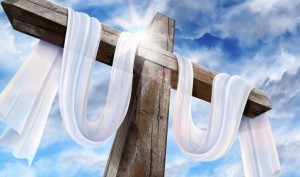 It happened this past June in Wuxi Village. According to the Associated Press, the government hired a crew to cut down the metal cross atop the Wuxi Christian Church in Zhejiang Province (just south of Shanghai on China’s east coast).
It happened this past June in Wuxi Village. According to the Associated Press, the government hired a crew to cut down the metal cross atop the Wuxi Christian Church in Zhejiang Province (just south of Shanghai on China’s east coast).
The day after they sawed it down, a church member welded the cross back in place and was brought in for hours of questioning. A week later, down came the cross a second time only to be put back by another church member.
After that, the church “has had its water and electricity cut off. Officials have attempted to install surveillance cameras and inquired about several church members’ work and their children’s schooling—a veiled threat that jobs and education might be at risk.”
Nonetheless, the congregation presses on to keep the cross on top of their church.
According to World Magazine, the Chinese government is taking down “illegal structures,” but World notes, “authorities have only focused their attention on churches”—churches and crosses.
In his 1909 novel, The Ball and the Cross, G. K. Chesterton’s evil genius, Dr. Lucifer, pontificates, “This globe is reasonable; that cross is unreasonable. …The globe is inevitable. The cross is arbitrary. Above all the globe is at unity with itself; the cross is primarily and above all things at enmity with itself. The cross is the conflict of two hostile lines, of irreconcilable directions. That silent thing up there is essentially a collision, a crash, a struggle in stone. Pah! that sacred symbol of yours has actually given its name to a description of desperation and muddle. When we speak of men at once ignorant of each other and frustrated by each other, we say they are at cross-purposes. Away with the thing! The very shape of it is a contradiction in terms.”
A Christian monk, Michael, who Lucifer addresses and who, we later learn, he fears above all men, replies that he is exactly correct. The cross is a contradiction because human beings are contradictions. Thus the cross is fully human. The ball is merely an abstraction favored by ideologues.
The globe or ball for Chesterton is the great “scientific” project of seeking human flourishing without God. As Alexander Havard writes in his book Virtuous Leadership, the “scientific” approach contains “a tendency to make people indifferent to developing virtue in themselves and those around them. Why bother when social engineering will take care of everything?”
The proponents of the ball pretend that the cross is obsolete. But the cross is a constant reminder that we need to take human nature as it actually is, a great contradiction of good and evil, virtue and vice, love and hatred.
The cross is also a symbol announcing that ultimate loyalty cannot be to this world and its powers. These are temporary and too often at cross-purposes (as they say) with God’s truth and God’s law.
So between the unscientific nature of the cross and question of loyalty to the masters of “scientific” solutions, it’s small wonder that the Chinese government wants to cut them all down.
Of course, it’s not just the Chinese government. A British Airways employee had to fight the UK government all the way to the European Court of Human Rights in order to be able to wear a cross while on the job and France bans the wearing of all religious symbols and clothing including crosses from public schools, welfare offices, and other government spaces.
Meanwhile in the United States, crosses on public land or even in public view have become lawsuit magnets. Veterans’ memorials in the Mojave Desert and on Mount Soledad have come under attack. Even the cross on the San Gabriel Mission depicted on the Los Angeles County sealhas created fits and lawsuits. And while the rumors about plans to take all the crosses off the grave markers at federal cemeteries like Arlington are false, it’s easy to see how such rumors got started.
“The message of the cross,” wrote St. Paul (1 Corinthians 1:18), “is foolishness to those who are perishing….” That is, to the worldly wise (to use an old expression) or the “scientific” (as in scientific Marxism or scientific atheism or scientific rationalism) the cross is nonsense and an offense. It always has been and always will be. “…but to us who are being saved,” Paul went on, the cross “is the power of God.”
It is precisely through its great contradiction that the cross can draw even the most hostile skeptic to faith in Christ—or, at least, that should be our hope for China, the United Kingdom, France, elsewhere in the world, and in the good old USA.
Ti è piaciuto l'articolo? Sostienici con un "Mi Piace" qui sotto nella nostra pagina Facebook



























